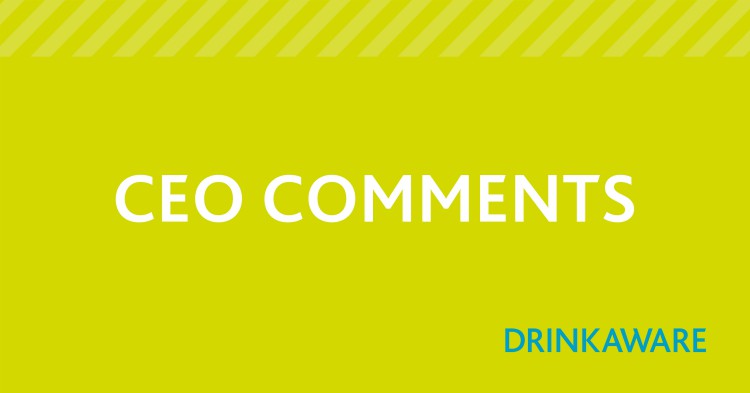A key finding in the latest HBSC report is heartening: at 37%, the number of 15-17 year olds who reported never having had a drink has substantially increased by 16% since the 2014 report, which is significant given that the average age of the first drink is 15 years (Drinkaware Index 2019).
It’s important to take stock of this positive shift and to build on it, to ask why and how this came about. Was it a shift in conversation, a growing acceptance and curiosity about sobriety, the wellbeing trend, government interventions, media and influencer support? And as the number of adults who do not drink is consistently circa 25%, is this is an opportunity to support today’s teens to continue their abstinence into adulthood?
Context is important though. Whilst the recent My World Survey 2 also showed a drop in the number of adolescents and young adults reporting drinking alcohol, for those who did drink, the type of drinking was more problematic and alcohol use was strongly associated with drug use in young adults. This is another growing trend and one that sits in stark contrast to the abstinence figures.
Like many others in public health, Drinkaware advocates for a change in the culture around alcohol in Ireland. Determinants of culture, and also of health, are the behaviours and attitudes to alcohol. For example, the complacent and complicit over-consumption of alcohol among Irish adults is evident in the 74% of Irish adults who believe drinking to excess is ‘just a part of Irish culture’ (Drinkaware Index 2019).
Arguably, against this cultural backdrop, the HSBC report is exposing the impact of this complacency on underage drinking:
- A quarter of teens who drink, are buying alcohol in bars, discos, off licenses and/or shops. And a third are consuming alcohol in bars, pubs and/or discos.
- More than half of teens who drink are accessing it at home, either being given it by a parent (34%) or sibling (9%) or taking it from the home (11%). In addition, 56% are consuming alcohol in the home setting – either their own (26%) or some one else’s home (30%).
All of these findings tell a cautionary cultural tale. One that suggests we as a society, made up of individuals, communities, businesses and political actors, need to be more judicious regarding underage drinking. They indicate a need for commercial outlets to deploy greater vigilance and adherence to their responsibilities and the law relating the sale and marketing of alcohol. And that careful judgement regarding alcohol is needed in the home. This includes considering how accessible alcohol is to children both inside and outside the home (and other people’s home). And questioning household rules regarding the provision as well as consumption of alcohol.
For a cultural change we need to consistently and strongly de-bunk the myths Irish adults have and replace them with the facts: Drinking underage in the home does not de-mystify alcohol or reduce their likelihood to develop alcohol-related problems in later life. Drinking underage impacts negatively on developing brains (up to the mid-twenties), mental health and is linked to drug use.
And we need to examine the cultural acceptance and social norming of alcohol consumption in a home setting (as quantified in the Drinkaware Index 2019 – 61% of all drinking occasions taking place within the home) and its impact on children and young people.
Cultural change needs a ‘whole-of-society’ approach – educators and parents can help build young people’s resilience, businesses need to apply the full spirit as well as letter of the law, government must deliver cohesive policies in prevention and intervention, and communities must support alternatives, education and protection.
A takeout from this report is that breaking the negative cycle regarding alcohol is possible. But to be probable, it needs collective, co-operative and cultural effort.


